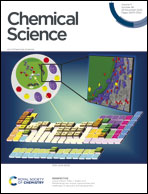Ligand-mediated formation of Cu/metal oxide hybrid nanocrystals with tunable number of interfaces†
Abstract
Combining domains of different chemical nature within the same hybrid material through the formation of heterojunctions provides the opportunity to exploit the properties of each individual component within the same nano-object; furthermore, new synergistic properties will often arise as a result of unique interface interactions. However, synthetic strategies enabling precise control over the final architecture of multicomponent objects still remain scarce for certain classes of materials. Herein, we report on the formation of Cu/MOx (M = Ce, Zn and Zr) hybrid nanocrystals with a tunable number of interfaces between the two domains. We demonstrate that the organic ligands employed during the synthesis play a key role in regulating the final configuration. Finally, we show that the synthesized nanocrystals serve as materials platforms to investigate the impact of the Cu/metal oxide interfaces in applications by focusing on the electrochemical CO2 reduction reaction as one representative example.



 Please wait while we load your content...
Please wait while we load your content...